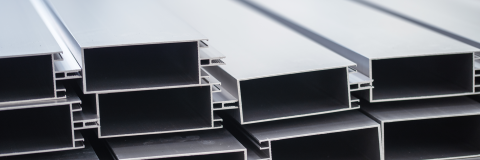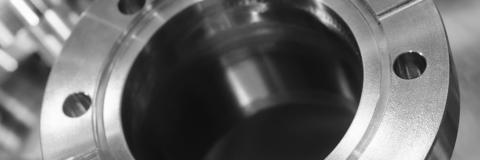It is hard to define, but there is something compelling about metal. The fact that there are three formative stages of human history (the Copper, Bronze, and Iron Ages¹) named after metals is evidence of how intertwined we are with this class of materials. Whether this is inherent in our neurochemical makeup, or the by-product of our quest for it over millennia, is uncertain, but it would be hard to deny that the haptics, heft, and engineered shapes that use it evoke very primal reactions.
Metallic coatings achieve two effects that pander to this metalophilic² tendency - they give non-metal objects many of the aesthetic qualities of metals, and they make metal objects last longer, with an extraordinary range of properties, at modest cost. And metal coatings also offer one 'superpower' that is unique.
Bringing Metal to Light
Plating-on-plastic (PoP) makes it possible to deposit a wide array of metals on many plastics. Two common applications of this are automotive chrome trim and bathroom fixtures, often mistaken for metallic components by consumers. The chemistry behind PoP is quite sophisticated, involving etching of the plastic, application of a catalyst, and the addition of multiple layers to create the desired appearance and function. The range of textures and colors available is quite wide, and the 'cool touch' of metal is real-the surface you interact with is actually metal. At the same time, the overall weight of the product is substantially less than an equivalent metal part, and the plastic substrate itself is virtually impervious to corrosion. The result is a component that combines the best of both materials. As a bonus, the parts are easy to recycle, as the plastic and metal can be separated after the part is destroyed mechanically.
Making Metal Last Longer
We are technically still in the Iron Age, although iron's alloy with carbon steel is now the more common form. The strength, relatively low cost, widespread availability, and versatility of steel have made it almost ubiquitous in modern society. But there are some things that steel, in non-stainless form, does not do well, primarily resisting rust. This is where metal coatings come in, allowing the strength and manufacturability of steel to shine, metaphorically speaking, while a thin metal layer saves it from the ravages of environmental exposure.
A splendid example of this can be found in fasteners, especially the simple nuts and bolts that hold nearly everything together. Whether they are securing a circuit board in a laptop or connecting spans of a suspension bridge, threaded fasteners are most often formed from steel and then electroplated with zinc or a zinc-nickel alloy, which gives them tremendous strength and versatility. A 10-to-20-micron layer of zinc nickel multiplies the effective lifespan of the fastener by an order of magnitude. Additionally, this layer is often further enhanced by a passivation layer and a topcoat to add protection, distinctive colors, and friction adjustment. The plated layer is a tiny fraction of a fastener by mass, but that tiny fraction radically enhances the value of the fastener.
Another interesting example is a gravure cylinder used for high-quality printing. The cylinder itself usually uses steel as a base metal, followed by a relatively thick copper layer, and finally, a thin top layer of hard chrome plating. The steel provides structural strength, along with the conductivity that enables the easy plating of the copper. The copper layer is engraved with a reverse image that becomes the image carrier for high-speed transfer of ink onto a variety of substrates. The final hard chrome layer is extremely durable to allow for extended service life, even on relatively abrasive substrates. Again, steel plated with layers of other metals creates a combination of performance and value that is unobtainable by any other method.
The Superpower of Metal Plating: Leveling
If making plastic feel like metal and making steel into the most ubiquitous engineering material on earth were not enough, there is a more subtle aspect of plated metal coatings that is perhaps its most remarkable one-leveling. Plating not only adds new properties in very thin layers, but also transforms the physical nature of the surface on an atomic scale. This is worth a little explanation and respect.
Bonding a thin layer of metal to another material by galvanic means is simple chemistry, but most industrial plating processes are considerably more sophisticated. They take advantage of chemical additives that further enhance their capabilities. One of the more remarkable enhancements is the ability for the plated layer to be smoother than the substrate on which it is attached. In theory, the plated layer should be an exact replica of the underlying surface, because that uneven surface supplies the electrons needed to convert a metal ion from solution into a solid metal on the surface. With the proper additives, however, the metal can be 'directed' to plate faster on lower sections of the surface, filling in the low areas and making the plated surface smooth. Since plating is an atom-by-atom process, it can create exquisitely smooth surfaces, leading to a deep mirror-fine finish even on complex shapes.
The Pandemic and PoP
The pandemic reminded us of another attractive feature of most standard chrome finishes-bacteria find them remarkably inhospitable and perish quickly on them. So those shiny finishes not only look clean, but they also stay clean. And this is an inherent property, not something that requires additives or modifications.
Conclusion
I invite you to join me in singing the praises of metallic coatings. They protect and enhance a wide range of materials, even though they are a tiny proportion of the weight of the parts. They can be applied on complex shapes and in high volumes at very reasonable costs, and can be produced with a surprisingly wide variety of textures and colors. They protect parts from corrosion, while protecting you from bacteria. Metallic coatings may be thin, but they are truly mighty.
¹ The Copper Age ran began around 5,000 BC, followed by the Bronze Age around 2,000 BC, and the Iron Age began around 1,000 BC, although the dates vary by geography.
² No, I did not make this word up, although it is admittedly pretty far out on the long tail of words used in English.
Read the full article, available now at pcimag.com











